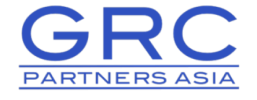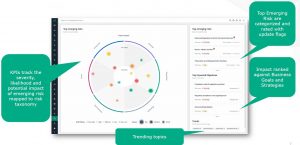In today’s rapidly evolving business landscape, organizations face the ongoing challenge of establishing robust governance, managing risks effectively, and ensuring regulatory compliance. GRC (Governance, Risk, and Compliance) is an important tool that helps organizations manage and align efforts, ensuring adherence to legal, regulatory, and ethical standards while mitigating risks.
For those organizations already well along their GRC journey, strategic preparation for the next stage is critical. Below, we outline how to approach GRC effectively and efficiently and offer some examples of how harmonizing your tools and processes can streamline ongoing operations.
Tying GRC to Risk Management and Internal Control Functions
GRC is about managing risks, ensuring an organization operates responsibly and ethically and in compliance with internal and external rules and regulations. By tying GRC to risk management and internal control functions, organizations can:
- Improve risk identification and assessment processes
- Strengthen internal controls
- Improve decision-making
- Boost operational efficiency
- Build trust with stakeholders
The Role of Functional Areas in GRC
Involve all functional areas in the organization in the GRC process to create a more robust and effective GRC program. This includes engaging with senior management so they can provide leadership and support for GRC programs and ensure alignment with business goals. In addition to the risk management team, who can help identify, assess, and mitigate risks, the internal audit team should be involved to provide independent assurance on the effectiveness of risk management and internal control processes. Legal, Finance, Compliance and Information Technology should also be at the table.
The Next Step in GRC: Harmonization and Integration
Organizations can, and typically do, have a diversified landscape of GRC tools. This can be due to many factors, such as mergers and acquisitions, the ongoing evolution of GRC requirements, or the desire to use best-of-breed solutions for specific areas.
Although having a diversified landscape of GRC tools can offer some benefits, doing so can also lead to challenges, including:
- Data silos: When different GRC tools are not integrated, it can be difficult to get a comprehensive view of risks and controls. This can make it difficult to make informed decisions about risk mitigation and compliance.
- Inefficiency: Having to use multiple GRC tools can be burdensome. In addition to having to be trained how to use each tool, employees also have to manually enter data into multiple systems.
- Cost: Maintaining a diversified landscape of GRC tools can be expensive. This is because organizations must pay for the licenses for each tool, as well as the support and maintenance of each tool.
The next step in GRC is to harmonize and integrate GRC tools. This can be done by streamlining data from different GRC tools into a single system, making it easy for employees to access and use this data.
There are many benefits to harmonizing and integrating GRC tools, including:
- Improved visibility: A single system with a comprehensive view of risks and controls can help organizations improve the visibility of risks and controls and make informed decisions
- Increased efficiency: A single system can streamline efforts so users enter data into one system versus many
- Reduced costs: Harmonizing and integrating GRC tools can help organizations consolidate licenses and support contracts
Here are just a few examples from companies who have partnered with SAI360 and are doing GRC harmonization and integration well:
Example 1: Growing from Compliance to Risk
A large multi-specialty medical group with over 600 care providers was looking for a GRC solution to improve its compliance posture, streamline its processes, and reduce its risk. After evaluating different solutions, the group chose SAI360’s GRC solution and has experienced many benefits, including:
- Improved compliance posture
- Streamlined processes
- Reduced risk
- Increased visibility into risks and controls
- Improved decision-making
Example 2: From Internal Control to Risk Management and Compliance
A global asset management firm that needed a solution to effectively manage internal control selected SAI360 GRC, which helped them implement a risk management and control framework in under four months. Key benefits experienced included:
- Effective global risk management
- Standardized controls
- Comprehensive risk management
Example 3: Streamlining GRC Initiatives
A dental benefits management company wanted to streamline many GRC initiatives, including client and network contracts management, incident response and risk assessments. Implementing SAI360 brought them:
- Improved compliance posture
- Streamlined processes
- Improved visibility
Leveraging SAI360’s GRC Solution
Organizations face risks across various areas. The use of different technologies, taxonomies, frameworks, and processes to manage these risks can lead to confusion among stakeholders. SAI360’s integrated GRC solution addresses these challenges. Our user-friendly interface allows organizations to store, manage, and extract risk data seamlessly and efficiently throughout the entire enterprise.
Leveraging SAI360’s platform, organizations can streamline their reporting practices, enhance compliance management, and gain a competitive advantage regarding risk assessments, policy management, compliance monitoring, and reporting.
Our integrated GRC capabilities include:
- Regulatory Compliance Support: Receive extensive support for regulatory compliance, stay up to date with changing regulations, track compliance obligations, and ensure timely adherence to requirements.
- Cybersecurity and Data Privacy: Better address cybersecurity and data privacy concerns; manage and mitigate risks associated with data breaches, privacy regulations, and information security.
- ESG Reporting Capabilities: Track, measure, and report on sustainability and responsible business practices
Overall, SAI360’s GRC solution offers organizations a powerful toolset to streamline reporting practices, enhance compliance management, and gain a competitive advantage.
This article was originally published by SAI360.






